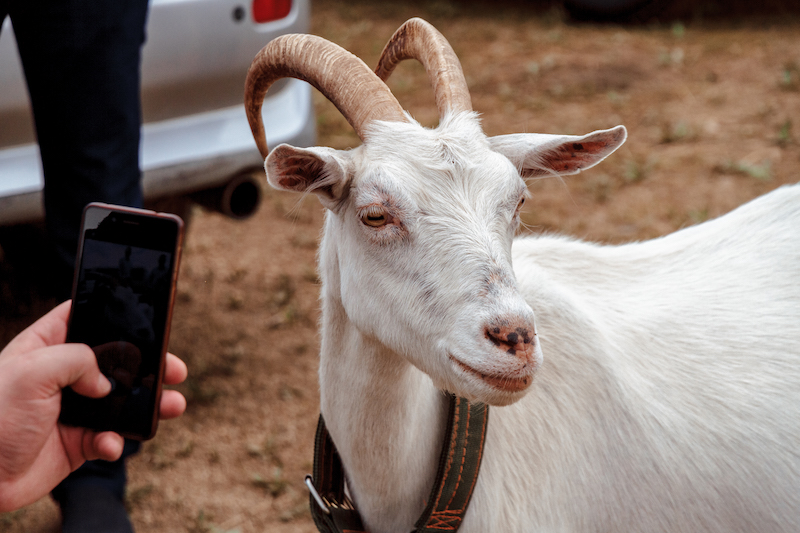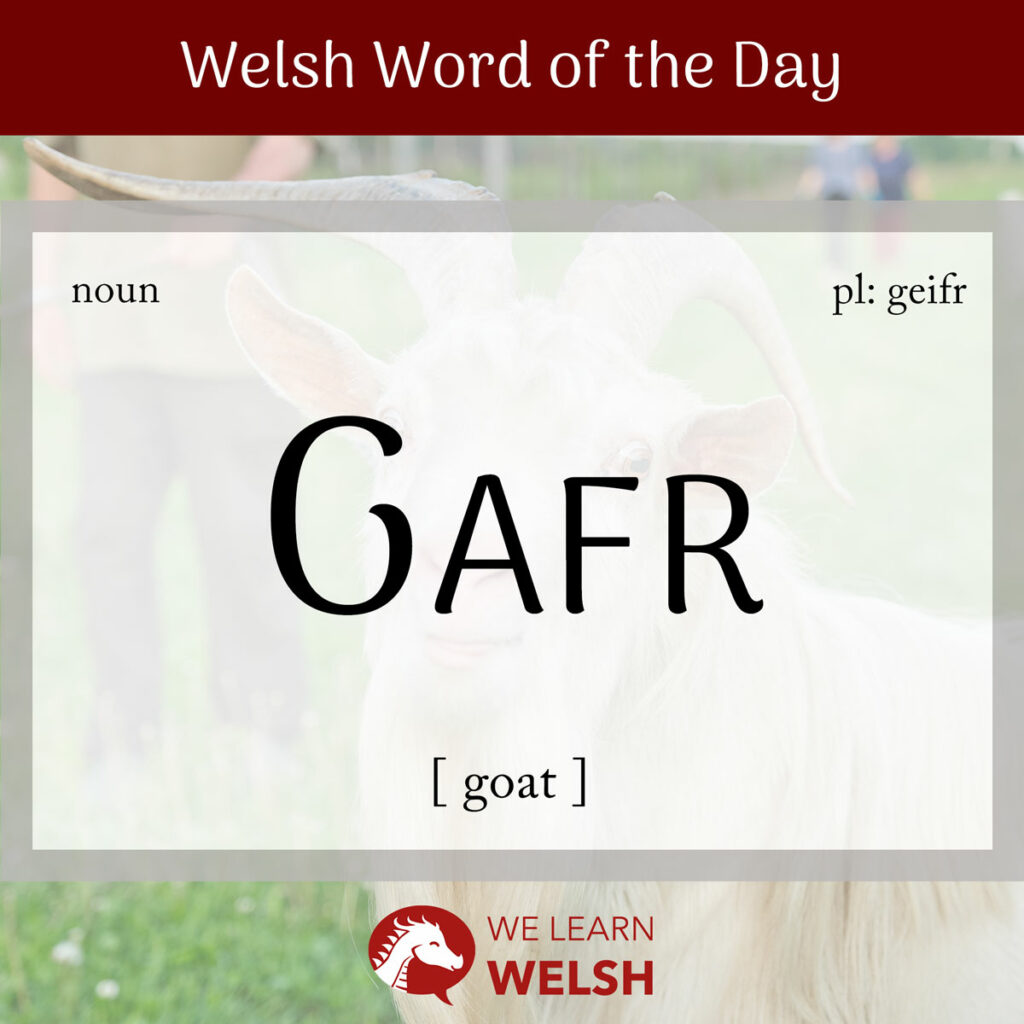The Welsh word for goat – the mischievous domestic animal – is gafr. The plural form is geifr.
gafr
goat
Gafr is exclusively a feminine noun, making it more accurately the equivalent of the English nanny goat, while a billy goat is a bwch gafr (plural: bychod gafr), though in informal conversation you might hear the simple term bili, borrowed from the English. The Three Billy Goats Gruff might be translated as Y Tri Bili-Bwch Gafr or simply Y Tri Bwch Gafr.
The words for goat kid are also differentiated by gender – a female goat kid is a gafran (plural: gafrannod), and a male goat kid is a myn (plural: mynnod). A castrated male goat, or wether, is a hafr (plural: hyfr).
Gafr derives from the Middle Welsh word *gauar, which is originally from the proto-Celtic root word *gabros. This is the same source as the Cornish word gaver, the Irish gabhar, and even the French slang garron – used for a breed of small Scottish horse!
Soft mutation
afr
Nasal mutation
ngafr
Aspirate mutation
N/A
Since gafr is a feminine noun, it always undergoes soft mutation after the definite article, making the goat translate to yr afr. On the other hand, the masculine equivalent, bwch gafr, remains y bwch gafr and doesn’t mutate in this case. If you were asking Which billy goat?, though, the question word pa would cause a soft mutation and you would need to say Pa fwch gafr?
Mae geifr yn anifeiliaid chwareus.
Goats are playful animals.
There are plenty of different types of geifr. A gafr ddof is a tame or domestic goat, and a gafr wyllt is a wild goat. There are herds of wild goats living on and around Wales’ highest mountain, Yr Wyddfa (Snowdon), though, despite having lived ferally for a long time, they’re actually descended from domestic animals. So, if you’re ever in Eryri (Snowdonia), you might be lucky enough to meet a gafr fynydd (mountain goat).
Gafr is used in various contexts to refer to a wide range of species. Some interesting examples include:
- gafr y graig = ibex
- gafr ddanas or gafr ddân = a deer, though the simple carw is more common
- gafrewig = antelope
- and even gafr y dŵr = water spider!
Since goats are anifeiliaid fferm (farm animals), they produce a lot of useful substances. Llaeth gafr (goat’s milk), is delicious, and can also be used to make caws gafr (goat’s cheese) or even sebon llaeth gafr (goat’s milk soap)! Goats may also be farmed for their croen (skin/hide), cig (meat), gwt (catgut), or gwlân (wool). Particularly luxurious gwlanen Cashmir (cashmere wool) is produced by geifr Cashmir (cashmere goats).
Salad caws gafr, os gwelwch yn dda.
A goat’s cheese salad, please.

There are a few Welsh idioms that refer to goats. For example, y bwch dihangol, which conveys a very similar sense to its English equivalent of scapegoat. Dihangol means escaped, safe, or ensuring safety, meaning that this expression literally translates to something like the buck/billy goat that ensures safety.
The English use of the word goat to refer to a caddish man or playboy doesn’t translate – you’d be more likely to hear ci (dog) – though the Geiriadur Prifysgol Cymru does actually record its being used to refer to the equivalent, a lascivious woman.
Goats are quite prominent in Welsh culture because of the popular folk song Cyfri’r Geifr (Counting the Goats), often referred to by its first line, Oes Gafr Eto? (Is there another goat?) In this quite silly song, the narrator describes a goat wandering on the mountains, listing all the different colours the goat could be. The first chorus is almost always gafr wen (a white goat – using the feminine form of white). With each chorus, a new colour is introduced, and the song must be sung at a faster pace, meaning that by three or four choruses in, it’s become a very difficult tongue twister indeed!

